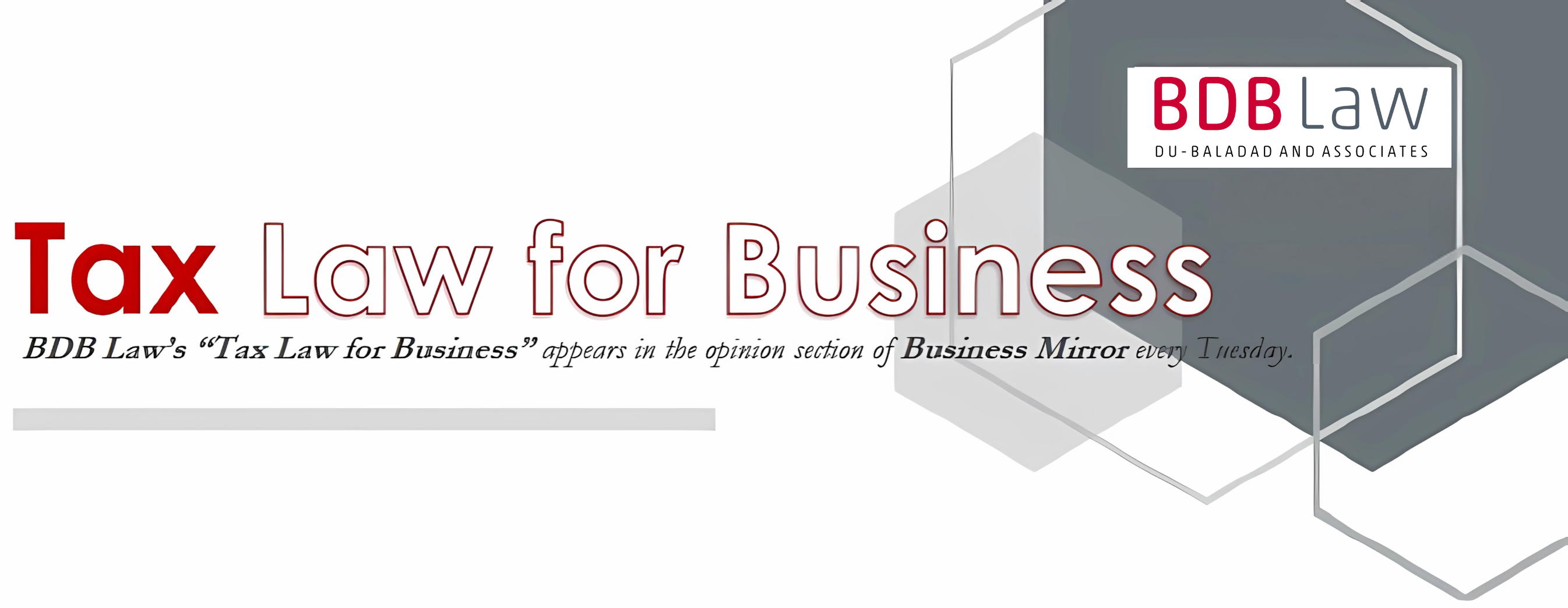
Digital Services Tax – From the Buyer’s Perspective
By: Atty. Jomel N. Manaig
"On paper and in press releases, the law mainly deals with nonresident digital service providers. The general idea is that since they are generating income in the Philippines, they should pay tax here. While the headline may have a dash of truth in it, is it really the nonresident digital service providers that pay?"
 Atty. Jomel N. Manaig +632 8403-2001 loc. 140 |
The law imposing VAT on digital services was enacted sometime in late 2024. The implementing rules then came in early 2025. Now, with RR No. 14-2025, we are given a stark reminder: VAT on digital services rendered by nonresident digital service providers will arrive on June 2, 2025.
This imposition is sweeping as it will cover a wide range of digital services that we all make use of. Whether it be binging your favorite shows, listening to the latest music, or using electronic tools in your everyday tasks – the law casted an expansive net.
 On paper and in press releases, the law mainly deals with nonresident digital service providers. The general idea is that since they are generating income in the Philippines, they should pay tax here. While the headline may have a dash of truth in it, is it really the nonresident digital service providers that pay?
On paper and in press releases, the law mainly deals with nonresident digital service providers. The general idea is that since they are generating income in the Philippines, they should pay tax here. While the headline may have a dash of truth in it, is it really the nonresident digital service providers that pay?
To answer that, we have to take a look at the elementary concept of VAT. Simply put, VAT is a tax that is “passed on” to the buyer of the goods or services. Although the seller is normally required to pay the VAT to the tax authorities, they are also allowed to pass on and charge the tax to their customers. Effectively, it is the ultimate consumer who bears and feels the burden of the VAT imposed.
This holds true for both kinds of customers: businesses (known as “B2B”) and end consumers (known as “B2C”). In effect, digital services consumed here in the Philippines would be more expensive because of the VAT passed on by the nonresident digital service providers to the customers.
For B2C customers, the increase in prices is the ultimate effect of the digital services tax. So expect an increase in subscription fees charged by your favorite streaming services, your everyday software as a service, and your go-to digital content providers, among other things.
For B2B customers, it gets more complicated. In addition to the increase in prices of digital services, B2B customers are given a new withholding obligation. This is because the law established the “reverse charge mechanism.” In this mechanism, instead of the nonresident digital service provider remitting to the BIR the VAT it passed on, the B2B customers are being required to withhold the VAT component of its payment and remit it directly with the BIR.
This is another compliance requirement that B2B customers of nonresident digital service providers should be aware of. Considering that the VAT on digital services would be imposed starting June 2, 2025, B2B customers must prepare for this new requirement.
Preparation would include, among others, creating their internal mechanisms and procedures to ensure withholding of VAT, securing the BIR certificate of registration from each of their nonresident digital service provider, and familiarizing themselves with the relevant tax return.
Even though the B2B customers may claim the VAT remitted as input tax, there is still the matter of the initial outlay of cash for the remittance to the BIR. This is another financial burden put on the shoulders of B2B customers.
Lastly, the obligation to withhold the VAT may expose the B2B customers to tax assessments arising from the use of third-party information, specifically those from the nonresident digital service providers. In case there is a discrepancy between the amount of income related to the tax withheld by the B2B customer and the amount of income reported by the nonresident digital service provider, it is likely that the B2B customers would be required to reconcile the discrepancy during an audit. However, can B2B customers reconcile a discrepancy if they do not have access to the data of the nonresident digital service provider? Is a showing by the B2B customer that it withheld, remitted, and reported the correct amount sufficient to convince the revenue officers?
It is then clear that the VAT on digital services affects not only nonresident digital service providers but also their B2B and B2C customers. For the latter, it is best to prepare for what is coming.
The author is a partner of Du-Baladad and Associates Law Offices (BDB Law).
The article is for general information only and is not intended, nor should be construed as a substitute for tax, legal or financial advice on any specific matter. Applicability of this article to any actual or particular tax or legal issue should be supported therefore by a professional study or advice. If you have any comments or questions concerning the article, you may e-mail the author at This email address is being protected from spambots. You need JavaScript enabled to view it. or call 8403-2001 local 140.



